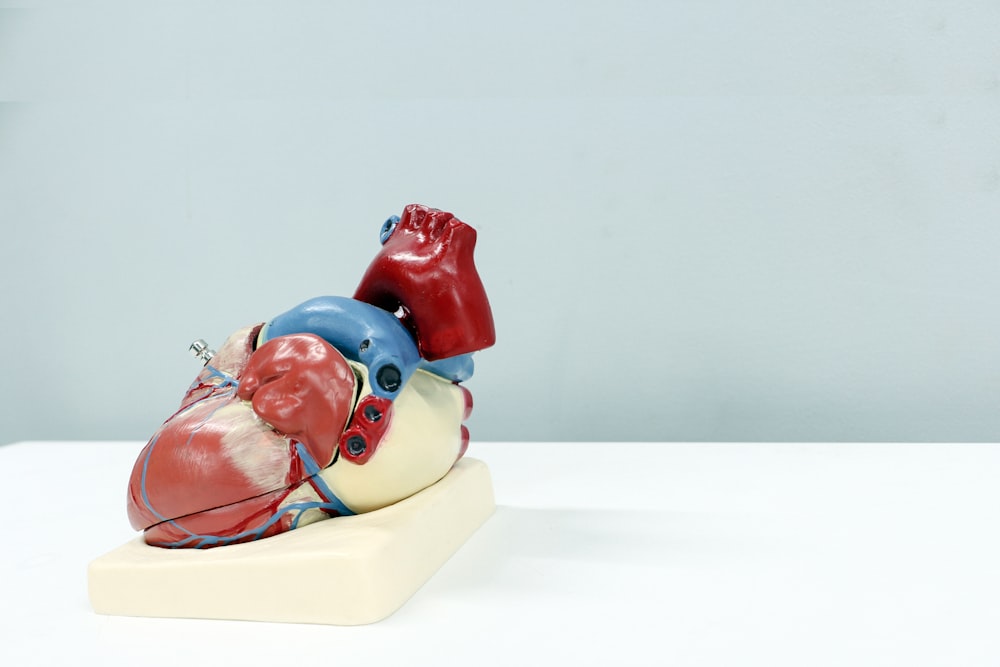FREE SHIPPING OVER $99
- Home
- Blog
- Health Devices
- Do you have low blood oxygen?

Do you have low blood oxygen?
Hypoxemia is a condition in which oxygen levels in the blood are abnormally low. Patients with hypoxemia experience shortness of breath and difficulty breathing, and can become very ill if it is left untreated. To diagnose hypoxemia, doctors may use a pulse oximetry test to measure the oxygen levels of a patient’s bloodstream. The test uses a device attached to the fingertip that measures the changes in the absorption of light in oxygenated and de-oxygenated blood to obtain a reading. However, there are factors that can make these results less accurate – poor circulation, darker skin tones, or temperature differences all have an impact on the accuracy of results.
When it comes to managing hypoxemia, there are several treatments available ranging from lifestyle changes to taking medication or using supplemental oxygen therapy. Depending on the severity of symptoms, your doctor may recommend one or more of these treatment options. Taking into account any medical conditions you might have, and any possible drug interactions will also be important considerations when exploring treatment choices for hypoxemia. It’s always best to talk with your doctor before attempting any course of treatment by yourself so that your health is safely monitored and treated accordingly.
Hypoxemia vs Hypoxia
Hypoxemia and hypoxia are both serious medical conditions that can be fatal if not treated quickly. Hypoxemia is the result of low levels of oxygen in the blood, usually caused by an underlying health issue. Hypoxia, on the other hand, occurs when there’s a lack of oxygen in your tissues or organs. It can happen right after birth, especially with premature babies, and it’s also possible to develop hypoxia during surgeries or strenuous exercise. It’s important to note that one often leads to the other: hypoxemia often triggers hypoxia due to inadequate delivery of oxygen throughout the body.
Both conditions can cause a variety of symptoms including shortness of breath, confusion, heart rate changes, dizziness or light-headedness, cyanosis (blue skin), seizures, somnolence (sleepiness) and even death if not addressed quickly. If you experience any of these symptoms, you should consult a doctor immediately for further evaluation and treatment recommendations. Depending on your condition, supplemental oxygen therapy may be recommended as well as lifestyle modifications such as quitting smoking or increasing exercise levels. Prompt medical care is essential for avoiding life-threatening complications from either hypoxemia or hypoxia.
Are you at Risk?
Hypoxemia is a medical condition in which the levels of oxygen in the bloodstream are lower than normal. It can be caused by a number of factors, including some types of heart and lung disease, infectious diseases, and an inadequate supply of oxygen to the body. People living with cardiac or respiratory diseases are more likely to experience hypoxemia due to compromised cardiac function and decreased respiratory efficiency. Some contagious respiratory illnesses can also increase risk levels for hypoxemia as they have the potential to damage the lungs or restrict air circulation.
In addition, smokers are at a higher risk for hypoxemia because smoking damages their lungs and decreases both air circulation as well as absorption of oxygen into the bloodstream. Also, individuals with respiratory issues that manifest during sleep often experience chronic hypoxemia because they breathe shallowly during sleep. Hypoxemia can cause serious health issues if left untreated, resulting in symptoms such as dizziness, fatigue and confusion. With proper medical care and dietary changes those affected by hypoxemia can recover quickly and live an active lifestyle once again.
Symptoms
Mild hypoxemia usually produces few if any symptoms and may not even be noticed until there are serious oxygen-related complications. As the level of hypoxemia worsens, symptoms become increasingly prominent with shortness of breath, excessive fatigue and dizziness becoming commonplace. In cases of extreme chronic hypoxemia chest pain can occur due to lack of adequate oxygen reaching the heart and can involve breathing difficulty to the point where deep breaths cannot even be taken in order for replenishing oxygenation. Hypoxemia ultimately requires immediate medical attention in order to properly diagnose and treat whatever underlying condition is causing it.

Why do I Need to test?
Blood oxygen tests measure the level of oxygen in a person’s blood. An oxygen level below normal can indicate an underlying medical condition or injury. Low blood oxygen levels can be serious and often require treatment. It’s important to have your healthcare provider perform regular tests to monitor your condition.
In certain situations, it may be necessary for your healthcare provider to order a test to determine the amount of time an individual has been receiving inadequate levels of oxygen during clinical events such as cardiac arrest or apnoea episodes. Additionally, this type of test is a standard requirement prior to surgical procedures to ensure that patient enters the procedure with adequate oxygen levels in their blood. A peripheral blood oxygen saturation test is a very simple and non-invasive procedure. An arterial blood oxygen saturation test requires a clinical referral and undergoing an invasive procedure. Each test provide vital information about a patient’s health and wellbeing. These are the reasons why it is so important to get one of the tests done regularly if needed.
Blood Oxygen Saturation
Oxygen saturation is a very important health measure, as it tells us how much oxygen is present in an individual’s blood. Oxygen is vital for the body to function properly, so a significant reduction in oxygen can lead to serious conditions such as hypoxia. Medical professionals use pulse oximeters to measure peripheral oxygen saturation levels. This is a device which is generally clipped onto the end of a finger or toe, which shines two different wavelengths of light through the skin. This allows the pulse oximeter to determine how much oxygen is present in the blood peripherally. A healthy saturation level should be anywhere between 95 and 100%, although some people may fall slightly outside of this range without having any adverse effects.
The healthy range for oxygen saturation levels is 95% – 100%. A lower-than-normal reading can indicate the presence of various illnesses or diseases. Medical professionals might also opt for continuous monitoring if they are looking at long-term trends rather than short-term readings. Continuous monitoring allows them to monitor changes in oxygen saturation over time so that any abnormalities can be detected early and treated before complications arise. This type of testing is especially useful for managing chronic conditions where early intervention is essential.
How to test?
A blood oxygen level test is an important tool for measuring a person’s health. Blood oxygen levels, also known as oxygen saturation, are an indication of the amount of oxygen being taken up by the body’s tissues and organs. It is important to measure this as it can be related to overall wellbeing, and low levels may show signs of respiratory infection or other medical issues. There are two primary ways to determine the concentration of oxygen in one’s blood: through a blood draw test (arterial method) or through pulse oximetry (peripheral method using an oximeter).
A blood draw test involves drawing a small sample of blood directly from your arm. Your blood sample will be analysed using a laboratory machine that measures arterial haemoglobin content, allowing for targeted results about your current state of health. A full blood test (FBT) reveals much more information than pulse oximetry, such as total red cell count, haematocrit level and other measures like electrolyte balance and general albumin concentrations. A single set of laboratory results can provide your doctor with insight into your general health status and any abnormalities or trends that could require further evaluation. With this in-depth information, doctors will be able to track your changes more accurately resulting in better treatment plans along with lifestyle modifications that ensure long-term health.
Pulse Oximetry
Pulse oximetry is a technology that is used to measure peripheral blood oxygen saturation levels and heart rate. The process involves attaching a small clip, usually on your finger or toe, which allows the device to read the levels of oxygen. This allows healthcare providers to quickly determine if someone’s levels are too low. This form of monitoring is especially common in hospital settings where oxygen levels need to be tracked frequently and closely. However, this technology can also be used at home with the purchase of an inexpensive Pulse Oximeter from most pharmacies or online stores.


This technology can provide peace of mind for those worried about their health or current levels of oxygen. Using this particular device provides an easy way to keep track of one’s blood oxygen saturation level and heart rate while being fast and inexpensive all at the same time.
This device is usually clipped onto the fingertip as this provides an easy access point for light transmission. Using two small LEDs, one emitting red light and the other infrared light, the pulse oximeter utilises transmitter and receiver sensors to measure how much of each light is absorbed by the patient’s tissue and blood.
The information collected from these sensors allows the machine to calculate the amount of oxygen circulating in the body peripherally, as it compares how much red/infrared light passes through compared to how much of it gets absorbed by material that contains haemoglobin (red blood cells). This means that it can give a fairly accurate indication of overall health based on changes in oxygen level found over time. These levels also allow doctors to assess serious conditions, enabling them to identify potential airway blockages, or other systemic issues. With regular use, medical professionals can support their clinical assessment and can also monitor their success with treatments and detect adverse changes early on, in order to provide assistance quickly.
Heart Sure
In modern era, monitoring oxygen saturation levels in the blood has become crucial for early detection and timely medical intervention. The Heart Sure Bluetooth Pulse Oximeter֯ emerges as a reliable ally in this endeavour, providing swift and accurate readings of blood oxygen saturation (Sp02) and pulse rate. Conveniently placed on an index finger, this portable device seamlessly connects to the Jumper Health App via Bluetooth, enabling users to record and graph their (Sp02) measurements for future analysis.
The advanced algorithm employed by the Heart Sure Bluetooth Pulse Oximeter enhances measurement accuracy, particularly in low perfusion situations. The Perfusion Index (PI) serves as an invaluable metric, ranging from 0.2% for a weak pulse to higher values for a stronger pulse, effectively gauging pulse strength at the sensor site. Whether assessing pre/post-exercise conditions or monitoring pre/post-operative states, this device offers versatility in its application.
Featuring a dual-colour OLED display with large font options and six display modes, the Heart Sure Bluetooth Pulse Oximeter ensures user-friendly interaction. With additional features such as sound notifications and multi-directional display, this oximeter combines precision with practicality, prioritising user experience and facilitating proactive health management.
֯Always read the label and follow the directions for use. Consult your health professional to evaluate the readings.
References
Low blood oxygen (hypoxemia) Causes – Mayo Clinic
Hypoxemia: Causes, Symptoms, Diagnosis & Treatment (clevelandclinic.org)
Blood Oxygen Level: What It Is & How To Increase It (clevelandclinic.org)
Hypoxemia (Low Blood Oxygen): Causes, Symptoms, Treatment (healthline.com)
Oxygen Levels, Pulse Oximeters, and COVID-19 – MN Dept. of Health (state.mn.us)Pulse Oximetry > Fact Sheets > Yale Medicine
Normal blood oxygen levels: What is safe, and what is low? (medicalnewstoday.com)
Tags
Leave a Comment Cancel reply
SUBSCRIBE
Subscribe to our mailing list so that you can be the first to know about new products and promotions.
© 2024. All Rights Reserved.








